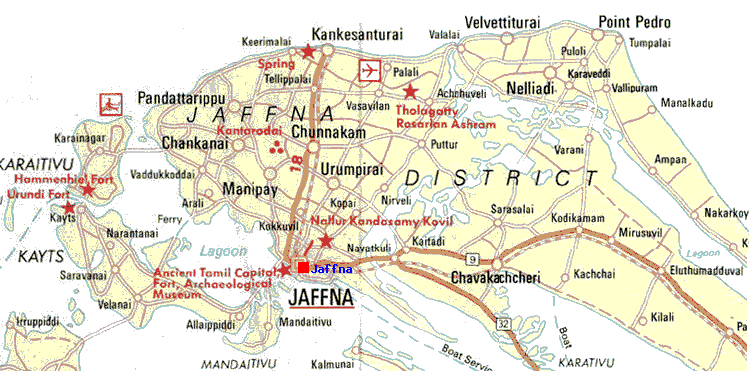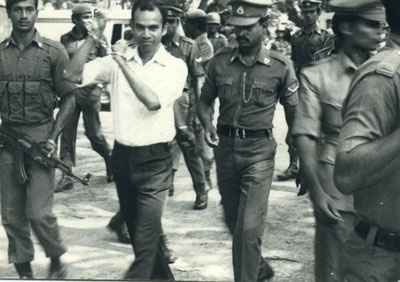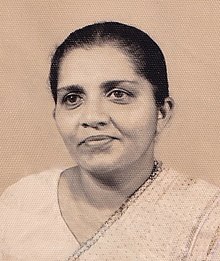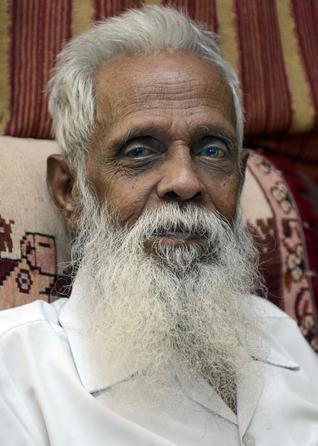by T. Sabaratnam; published March 3, 2004
Volume 1, Chapter 31
Original index of series
Filling the Vacuum
Pirapaharan landed near Valvettithurai before dawn on 18 February 1983, one and a half years after he left for Tamil Nadu.
When he left on midnight of 6 June 1981, six days after he witnessed the burning of the Jaffna Library, he was sad and distressed. Army and police pressure was on him. Hideouts had became scarce. Finance was running dry. His trusted friends had deserted him. He was reduced to a position which forced him to arrange a “working relationship” with TELO to keep his head and his movement aloft.
In the 19 months he spent in Tamil Nadu, though he underwent some difficulties like the Pondy Bazaar shootout and the consequent spell in police custody, he had rebuilt the LTTE and had developed its strength and made it capable of standing alone.
The mass agitational environment Jayewardene government’s actions had built in Jaffna had created, Pirapaharan felt, the condition of popular resentment necessary to take forward armed struggle. He also perceived the gradual rejection of TULF leadership by the people, who felt that the TULF had surrendered itself to Jayewardene, had created a leadership vacuum.
Baby Subramaniam
He discussed these two factors extensively with Baby Subramaniam and Nedumaran.
“The conditions needed for the success of an armed struggle are now there, thanks to Jayewardene,” Nedumaran recalls Pirapaharan telling him. “All that is required is to sustain the momentum. If we fail to take advantage, it will dissipate,” Pirapaharan argued.
Pirapaharan decided to return to Jaffna with Seelan, whose knee injury had healed, and convert the agitational atmosphere into a confrontational phase of the struggle. He wanted to launch the freedom struggle he had been yearning to for since childhood. He wanted to hit back and hit back very hard.
Pirapaharan had one problem. He was on court bail. If he jumped, would it cause any embarrassment or difficulty to Nedumaran? He had been living in Nedumaran’s house in Madurai since the court released him on bail.
“Will it cause you any trouble if I return to Jaffna?” Pirapaharan asked Nedumaran.
Nedumaran replied: “Don’t worry about me. Do what is good for you and your struggle.”
On the very night, he landed in Jaffna, the LTTE, which was lying low after the October 27 Chavakachcheri Police Station attack, struck and struck hard, stunning the police and the army.
Nedumaran and Prabakaran, late 1980s
Around 8.15 that night Point Pedro Police Inspector E. K. R. Wijewardene went in his jeep to Siri Café to buy cigarettes. His family had come on a holiday and he had invited his friends for dinner. When he was about to get into the jeep after buying the cigarettes, four Tigers, who had been following him, shot and killed him and his driver, Weerasinghe, who got down to open the door for his boss, and drove away in the police jeep 31 Sri 5627. The jeep was found abandoned at Puttur the next day.
The Wijewardene killing did what Pirapaharan had planned. Eelanadu led with the story the next morning giving graphic details. The paper also covered in detail the inquest and the investigation over the following days, including the search the army intelligence unit made for Mahattaya in Valvettithurai. Residents of Vadamarachchi were pleased with the murder.
They considered Wijewardene a terror. He used the powers conferred on him by the Prevention of Terrorism Act to harass civilians. His removal from the scene was welcomed as a help done to them. The Wijewardene murder was the first step Pirapaharan took to give a new character to the armed struggle: Protector of the People from State Terrorism.
Four days later, on 22 February, Pirapaharan added another characteristic to the armed struggle: Protector of the People from Corruption and other Social Ills.
The first victim was Kopay Member of Parliament A. M. Alalasundaram. He was then the president of Jaffna Multi-Purpose Cooperative Society (MPCS).
Alalasundaram, a pungent orator and a lawyer, had been a virulent critic of the supporters of Sirimavo Bandaranaike’s government who accepted positions and perks. He was specially critical of Alfred Duraiappah who was at that time president of the MPCS. At public meetings, he ridiculed Duraiappah calling him “coopan kallan” meaning “ration book thief.”
After the 1977 election, the TULF, using its closeness to Jayewardene, followed the practice it had earlier criticized.
Alalasundaram was appointed president of the Jaffna MPCS. Thereafter, there were charges of corruption and misuse and abuse of power by him. Manoharan, an employee, started a death fast pinpointing the malpractices and demanded Alalasundaram’s resignation. Manoharan demanded that the accounts and other documents be audited by an independent group of citizens to verify his charges.
Then one night the building where the documents were stored caught fire and all vital documents were destroyed. The general belief was that that fire was engineered by Alalasundaram. Pirapaharan decided to teach Alalasundaram and the TULF that they could not act as they liked and that the interest of the people was paramount.
Hearing knocks at the door of his house at Kalviyankadu, Alalasundaram asked who it was. “Alal annaiyai parka venum” (I want to see elder brother Alal), someone replied. Alalsundaram opened the door. Ganesh of the LTTE went up to him and shot at his right foot.
“Annai (elder brother). Take this as a warning. Do not continue your corrupt activities,” Ganesh warned and rode away in the bicycle he came.
Next day it was the talk of the town. “Alal had been warned by the LTTE,” was the topic of appreciative conversation.

Jaffna Peninsula
By shooting at Alalasundaram Pirapaharan gave four messages to the agitated people. First, the LTTE is back in action. Second, it will protect you. Third, it will take action against corrupt elements. Fourth, it is no longer the handmaid of the TULF.
Next day, the LTTE issued a signed leaflet. It called anti-social activities a heinous crime. It gave details of the corrupt activities of Alalsundaram. It said Alalsundaram was shot in the right foot as a warning.
The warning administered to Alalasundaram had the desired effect. The members of the Jaffna MPCS board of
management resigned. TULF leaders who were under the impression that the LTTE would not go against it began to shiver.
Amirthalingam issued a statement condemning the Alalasundaram shooting incident.
Thangadurai’s Historic Speech
The mounting Tamil anger against state terrorism and repression was kindled by a courtroom drama on February 17 and 24. On February 17, the day on which Pirapaharan left Madurai on his return journey, senior defence counsel N. Satyendra, who defended the accused in the Neerveli Bank Robbery, wound up his submission with the historic words which touched the nerves of every Tamil, in Sri Lanka and abroad.
 The accused in that case heard by the High Court Judge C. L. T. Moonemale were: Thangadurai, Kuttimani, Thevan, Sivapalan Master, Nadesathasan and Sri Sabaratnam, who was absconding.
The accused in that case heard by the High Court Judge C. L. T. Moonemale were: Thangadurai, Kuttimani, Thevan, Sivapalan Master, Nadesathasan and Sri Sabaratnam, who was absconding.
Said Satiyendra: “As regards my clients, the accused, I wish to state publicly from this court of record, that in the presence of those individuals who belong to my community and who have been prepared to sacrifice what is perhaps the most
precious possession of any individual – his very life – for the cause of the liberation of their people, I feel humble.”
On 24 February the Judge asked the accused whether they had anything to say before he sentenced them to life imprisonment, Thangadurai made a moving speech in Tamil which Satyendra translated at the beginning. As the speech progressed, Satyendra was moved to tears. Overcome with emotion he informed the judge his inability to continue translation. Sivasithamparam, who assisted Satyendra, translated the rest of the speech.

Nadarajah Thangathurai going to court, Colombo, Feb. 24, 1983
Thangadurai, who traced the history of the Tamils, the discriminations heaped on them after independence, the failure of the effort the moderate leadership took to win for the Tamil people their legitimate rights and the emergence of armed struggle to meet state oppression unleashed on them, concluded his moving speech thus:
“We are not lovers of violence, nor victims of mental disorder. We are fighters, belonging to an organization that is struggling to liberate our people. To those noble souls who keep on prating about terrorism, we have something to say.
“Did you not get frightened of terrorism when hundreds of Tamils got massacred in cold blood, when the racist hate spread like wild-fire in this country of yours? Did terrorism mean nothing to you when innocent Tamil women were raped? When the cultural treasures were set on fire? Why, in 1977 alone, 400 Tamils lost their lives reddening the sky above with their spattered blood. Did you not see any terrorism then?
“It is only when a few ruthless policemen were killed in Tamil Eelam and few million rupees bank money robbed that terrorism strikes you in the face…
“But my fervent prayer is that innocent Sinhalese people should not have to reap what the power-hungry Sinhalese politicians have sown. These tribulations are a boon bestowed by the God to purify us. The final victory is ours.”
I was present in the court when Thangadurai made his prediction of final victory and prayed that innocent Sinhalese people be spared of reaping what their power-hungry leaders had sown. I was moved to tears. All Tamils present in court were also moved. Thangathurai united all of us emotionally. He also united the Tamils living in Sri Lanka and abroad. He cemented the growing Tamil emotional union.
Tamil papers highlighted the concluding portion of Thangadurai’s speech and wrote editorials on the impact it would have on the Tamil people. The English language papers ignored the speech and highlighted Thangathurai’s life sentence and speculated that it would help end Tamil ‘terrorism.’ Sinhala papers gloated at the sentence and praised the army and the police for arresting the perpetrators of terrorism. Sinhala journalists failed to realize and analyze the impact the speech would have on the Tamils and the future of Sri Lanka. They never realized that there are two parties to the ethnic conflict.
By presenting only one side of the problem they aided ad abetted the crimes committed by their leaders.
The Second Landmine Attack
The re-emergence of the LTTE shook the government and its security establishment. It changed the security situation in the north dramatically. Army Commander Tissa Weeratunga told David Selbourne, a British journalist: “We are not on top.

David Selbourne
The initiative is with the terrorists. They choose the time and place. We can only be reactive.”
Weeratunga was unaware at the time he made this remark that Pirapaharan was preparing for a landmine war that would restrict the army’s reactive capability. The failure of the Ponnalai Causeway attempt to blow up the naval convoy did not discourage the LTTE in experimenting with landmines. They learnt from their mistakes and adopted measures to correct them. They found the use of a generator to produce electricity to power the exploder cumbersome. It was too heavy to carry and made a lot of noise. They replaced the generator with a lorry battery.
The second landmine explosion experiment was also not a total success. It was conducted near Umayalpuram Kovil in Kilinochchi on 4 March 1983. Seelan was placed in charge of the operation. Sellakili, as in the first attempt, was to activate the landmines with an exploder. Unlike in the Ponnalai Causeway attempt, this time the Tigers added a new element. They decided to shoot the soldiers who escaped the explosion.
The Tigers, who arrived in a mini-bus, buried two mines on the road and covered them with tar. The wire that connected the mines to the exploder was covered with tar and sand. The Tigers divided themselves into two groups and took up position on either side of the road. Their target was the military truck that brought meals to the soldiers who provided protection to the Kilinochchi Police Station. The military truck brought the meals from Elephant Pass Camp- breakfast, lunch and dinner. The Tigers chose to attack the breakfast truck because vehicular traffic at that time was minimal.
Ganesh
The army truck left Elephant Pass around 7 a.m. Four soldiers escorted it. Seelan ,who was observing the road, alerted his colleagues when he sighted the truck. Sellakili mistimed this time, too. But it was an improvement on the Ponnalai attempt. Both landmines exploded when the truck was ten meters away. The driver brought the truck to a halt just before it reached the crater dug by the explosion. The soldiers jumped out firing their automatic rifles.
Tigers fired at the soldiers from both sides. Two soldiers were hurt. They threw away their weapons and ran back towards Elephant Pass. The driver also fled, abandoning the truck. The Tigers came onto the road and assembled behind the truck.
Two of them picked up the guns, while two others crawled under the truck to study it. They ate the food parcels they had brought and drank fruit drinks. They took things easy because they thought army reinforcements would arrive only after the soldiers who fled sent messages to Elephant Pass Camp.
An unexpected thing happened, however. Two scout cars of the Armoured Corps was on their way from Mankulam Camp to Palaly. They were on a routine change-over. They carried seven soldiers. The leading scout car noticed an army truck on the centre of the road. The driver observed a group of persons in military uniform standing near the truck. Tigers also noticed the army vehicle speeding towards them. They jumped onto both sides of the road and started firing at the army vehicles.
The driver of the first scout car applied the brake. Two soldiers in the first car were injured. The driver of the second car swerved to avoid colliding with the first and fell into a ditch. The Tigers, upset by this unexpected turn of events, ran towards Paranthan where they had parked their mini-bus.
In their haste, four of them left behind their shoes. Army intelligence investigators found that they were jungle boots with the names of the users written on them. The names on them were Kittu, Ganesh, Victor and Pottu.
Those men were not used to jungle boots and found it easier to run barefoot.
Investigators found a small piece of paper near the army truck. On it was written the name Chitravel Sivanantharajah and the address Kiliveddi, Trincomalee District. Soldiers of the Army Intelligence Unit traveled to Kiliveddi to question Sivanantharajah. He told them that Charles Anthony, his classmate who was already in the LTTE, had tried to drag him into the LTTE but he did not join. The investigators who released Sivanantharajah arrested 28-year-old Kathirgamathamby Navaratnarajah on suspicion under the PTA at Kiliveddi on 25 March for reasons unknown and brought him to Gurunagar for investigations. He died in custody on 10 April 1983.
The army, which handed his body to the Jaffna Hospital, said Navaratnarajah died due to illness but that was challenged.
Dr. N. Saravanapavananthan, Additional Judicial Medical Officer (A. J. M. O.) held the post-mortem examination and the inquest. He was Professor of Forensic Medicine, Jaffna University.
The medical report submitted by Dr. Saravanapavananthan read: “There were twenty-five external injuries and ten internal injuries in the deceased Navaratnarajah’s body. The contusions of the lungs could have been caused by blows. I am of the opinion that death was due to cardio-respiratory failure due to multiple muscle injuries and contusions of the lungs. In my opinion, adequate treatment from an institution would have saved his life.”
The Saturday Review of 30 April 1983, which led with the Navaratnarajah story, said the police searched the mortuary after the inquest was completed for the file about the inquest. They could not get the file because Dr.
Saravanapavananthan had kept it in a safe place.
The death of Navaratnarajah and the torture inflicted on youths detained under the PTA further aroused Tamil indignation and intensified their feeling of alienation. Torture of detainees had become the rule and not an exception and that had created an environment of confrontation between the Tamil public and the police and the armed forces of the state.
On 5 April, five days before Navaratnarajah’s death, police baton charged and tear- gassed to break up a procession of students who protested against arrests and torture under the PTA. The students organized the protest march to begin from St. James Church, Main Street. On the morning of 5 April the police cordoned off the church premises and prevented anyone going towards it. The students commenced the march from the nearby Cathedral grounds thus beating the police cordon. Enraged policemen intercepted the march and dispersed it.
Countrywide Repression
The Jayewardene regime, while unleashing state-sponsored oppression in the north-east, resorted to increased repression in the Sinhala majority south. Starting with the break-up of the 1980 general strike using UNP trade union Janatha Sevaka Sangamaya’s (JSS) thugs, the Jayewardene government put down all opposition with a heavy hand. The two sectors that showed some sort of resistance were the farmers of the Moneragala District, who protested against the takeover of their lands by sugar multinationals, and university students, who resisted the government’s interference in the university administration and the threat it posed to free education. The students expanded the scope of their opposition by demanding the repeal of the PTA and calling for an end to ‘police brutality.’ University students tasted police brutality when striking students of Colombo and Sri Jayawardenepura universities were assaulted and chased away. This led to the boycott of lecturers by students of Kelaniya, Peradena, Ruhuna and Batticoloa Universities and to the one-day strike of 24 February, 1983.

Mrs. Vivienne Gunawardene
The repression also took the form of pushing the opposition into disarray and the use of widespread violence to win elections. Pushing out Sirimavo Bandaranaike from the election arena was followed by imprisoning the rising star of the opposition, Vijaya Kumaratunga, through the invention of a Naxalite plot, and the skilful manipulation of Anura Bandaranaike. Widespread violence, intimidation and ballot stuffing were practiced after the Presidential election. Making use of the police to arrest SLFP district level organizers and polling agents on trumped up charges was a novel practice developed by the Jayewardene government.
The Jayewardene government also practiced the art of making democratic-looking gestures to whitewash its sins.
Following the referendum to extend the life of the 1977 parliament for another six years, which was criticized locally and internationally, President Jayewardene held by-elections in 18 constituencies where “No” votes had exceeded the “Yes” votes in his referendum. The UNP won in 14 constituencies in the elections held on 18 May 1983 and Jayewardene claimed those results showed that his party continued to enjoy popular support. But opposition parties charged the UNP with election malpractices.
In March 1983, the Liberation Tigers of Tamil Eelam circulated a memorandum addressed to the chairman and world leaders who were participating in the seventh summit meeting of Non-Aligned Nations, held in New Delhi between March 7 and 15, documenting the state terrorism practiced by the government of Sri Lanka and expressing the need for the Tigers to enter into an armed conflict with the government for the creation of a separate state for Tamils. The memorandum declared:
“To the community of world nations, Sri Lanka attempts to portray itself as a paradise island, cherishing the Buddhist ideals of peace and dharma, adhering to a noble political doctrine of socialist democracy and pursuing a neutral path of non-alignment. Paradoxically, behind this political facade lies the factual reality, the reality of racial repression, of the blatant violation of basic human rights, of police and military brutality, or attempted genocide. Masterminding a totalitarian political system with the collusion of US imperialism, the Sri Lankan ruling elite since ‘independence’ wielded their political power by invoking the ideology of national chauvinism and religious fanaticism and by actually practicing a vicious and calculated policy of racial repression against the Tamil people.

S.A. David. Photo courtesy The Hindu August 2, 2012
“It is a tragic paradox that dictatorial regimes like Sri Lanka, who stand indicted by world humanist movements, for crimes against humanity, could parade on a world forum with the mantle of democracy and dharma. Our objective is to expose this hypocrisy and place before you the authentic story, the story of the immense sufferings as well as the heroic struggle our people, who have no choice but to fight for dignity and freedom, rather than be reduced to slavery and slow death.”
The Jayewardene government used the police and the army as tools of oppression. The Civil Rights Movement voiced its concern about this disturbing trend. At a meeting held on 15 April 1983 under the chairmanship of Bishop Lakshman Wickremasinghe, the Civil Rights Movement expressed concern at the growing indications of police misconduct. It listed in particular: assaults against journalists at Kotmale; the assault and unlawful detention of a 17-year-old boy at the Kandy police station; assaults against women strikers at Ekala; assaults against students at Jayewardenepura; the death of a suspect held in police custody at Matale; the assault against pavement hawkers in Colombo; and the assault against former M.P. Mrs. Vivienne Gunawardene.
The treatment Tamils received was worse. They were detained on mere suspicion, tortured, and made to sign confessional statements which the police themselves wrote. Those statements were then used against the arrested persons to convict them. In its issue of 30 April 1983, Saturday Review highlighted the detention and torture of architect S. Arulanandan David, President of Gandhiyam.
Next: Chapter: 33. Knocking Out the Base
To Be published March 10
###
Volume One
Chapter 1: Why didn’t he hit back?
Chapter 2: Going in for a Revolver
Chapter 3: The Unexpected Explosion
Chapter 4: The Tamil Mood Toughens
Chapter 5: Tamil Youths Turn Assertive
Chapter 6: Birth of Tamil New Tigers
Chapter 8: First Military Operation
Chapter 9: TNT Matures into the LTTE
Chapter 10: The Mandate Affirmed
Chapter 11: The Mandate Ratified
Chapter 12: Moderates Ignore Mandate
Chapter 13: Militants Come to the Fore
Chapter 14: The LTTE Comes into the Open
Chapter 15: The Ban, J.R.’s Gift
Chapter 16: Wresting Weapons from the Enemy
Chapter 17: Sinhala-Tamil Tension Mounts
Chapter 18: Tamils Lose Faith in Commissions
Chapter 19: Balasingam Enters the Scene
Chapter 20: Jaffna Turned Torture Chamber
Chapter 21: The Split of the LTTE
Chapter 22: The Burning of the Jaffna Library
Chapter 23: Who Gave the Order?
Chapter 24: Tamils Still Back Moderates
Chapter 25: Parliament Discuses Ways to Kill Amir
Chapter 26: The First Attack on the Army
Chapter 27: Amirthalingam Taken for a Ride
Chapter 28: RAW Meets Pirapaharan
Chapter 29: The Indian Interest
Chapter 30: LTTE Guerrillas in Action
Chapter 31: The Death of the First Hero
Chapter 32: The Return of Pirapaharan
Chapter 33: Knocking Out the Base
Chapter 34: Tamils Follow Militant Leadership